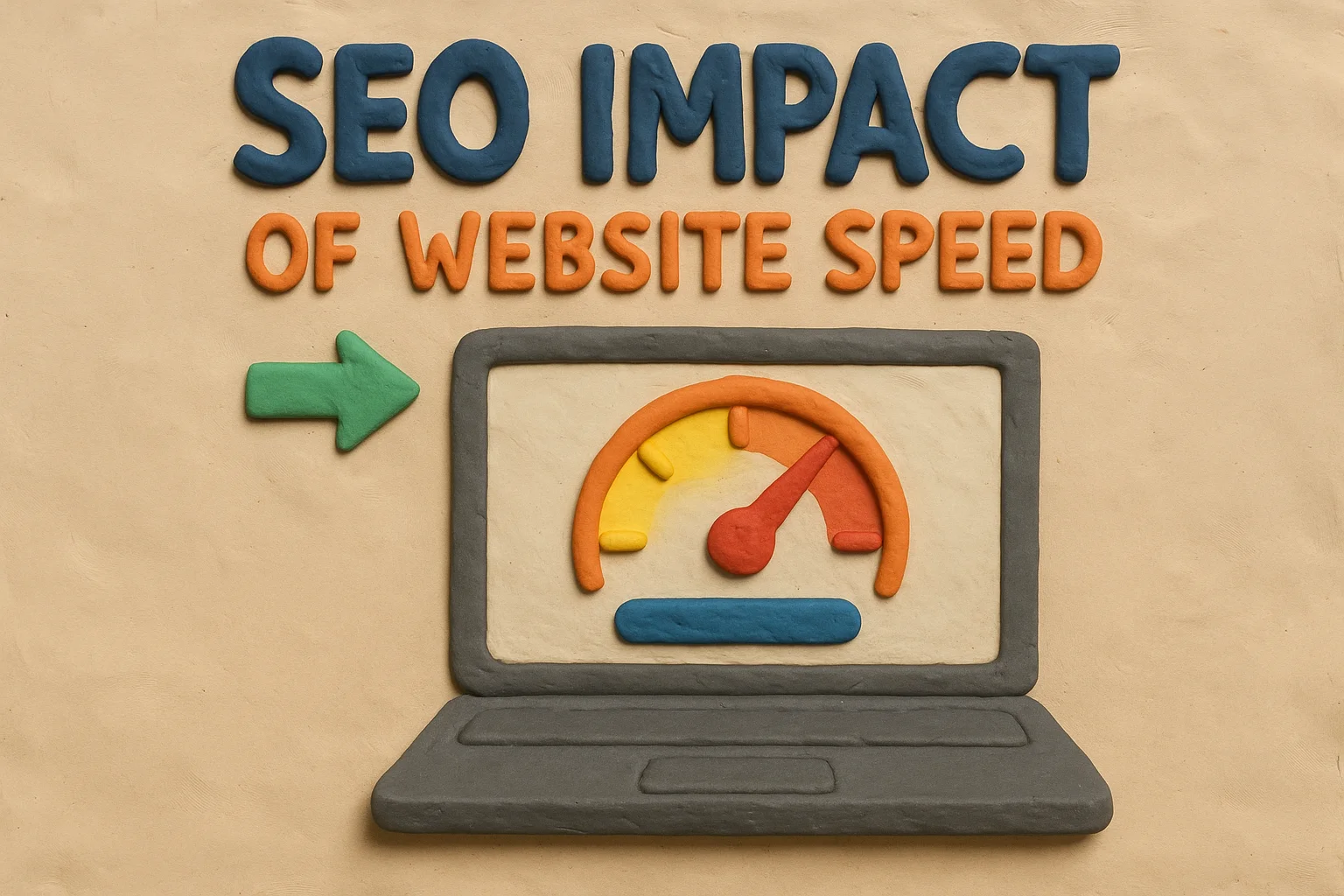When it comes to SEO, many businesses focus on keywords, backlinks, and content—but overlook one silent killer of rankings: slow websites. The SEO impact of website speed is bigger than most realize. Google has made it clear: if your site is slow, your rankings (and revenue) will suffer.
In this post, we’ll break down how website speed affects your SEO, why it matters more than ever in 2025, and what you can do to fix it fast.
Why Website Speed Matters for SEO
Google’s job is to deliver the best possible experience to users—and site speed is a major part of that experience.
Here’s what happens when your site is slow:
- Higher bounce rates
- Lower dwell time
- Fewer page views
- Reduced conversions
- Lower rankings in search results
According to Google research, if a page takes longer than 3 seconds to load, over 50% of users abandon it.
The SEO Impact of Website Speed: How It Works
Google officially made speed a ranking factor as early as 2010, and further emphasized it with:
- The Speed Update (2018): Mobile page speed became a direct ranking signal
- Core Web Vitals (2021–2023): Real-world performance metrics became part of Google’s Page Experience algorithm
- Mobile-First Indexing: Google now primarily evaluates the mobile version of your site
In short: A slow website hurts your rankings, user experience, and conversion rates.
How to Measure Your Website Speed
Before you improve anything, you need to know where you stand. Use these free tools:
🔧 Google PageSpeed Insights
Gives detailed performance scores for mobile and desktop, including Core Web Vitals.
🧪 GTmetrix
Great for visualizing load times and identifying bottlenecks.
🧰 Google Search Console
Under “Page Experience” > “Core Web Vitals,” see which URLs are slow on real devices.
What Are Core Web Vitals?
Core Web Vitals are Google’s real-world speed and usability metrics:
| Metric | What It Measures | Ideal Value |
|---|---|---|
| LCP (Largest Contentful Paint) | Loading speed | Under 2.5s |
| FID (First Input Delay) | Interactivity | Under 100ms |
| CLS (Cumulative Layout Shift) | Visual stability | Under 0.1 |
Failing Core Web Vitals can result in suppressed rankings—especially on mobile.
How to Improve Website Speed (And Boost Your SEO)
1. Optimize Images
Large, uncompressed images are a top speed killer.
✅ Use next-gen formats like WebP
✅ Compress using TinyPNG or built-in CMS tools
✅ Set proper image dimensions
2. Enable Lazy Loading
Only load images and videos as they scroll into view, instead of all at once.
✅ Saves bandwidth and improves initial page load
✅ Most modern CMS platforms support this out of the box
3. Minimize CSS and JavaScript
Too much code slows your site down.
✅ Remove unused CSS/JS
✅ Use minification tools or plugins like Autoptimize or WP Rocket
✅ Defer non-critical scripts to load after content
4. Use a Content Delivery Network (CDN)
A CDN serves your site from the nearest server to the user, improving speed globally.
✅ Try Cloudflare or Bunny.net
5. Reduce Server Response Time
If your hosting is slow, your site will be too—no matter how optimized your content is.
✅ Upgrade to faster hosting (VPS or cloud-based)
✅ Optimize your CMS/database (especially if using WordPress)
6. Use Browser Caching
Store common assets in the user’s browser so they don’t have to reload each time.
✅ Set proper cache expiration headers
✅ Plugins like W3 Total Cache make this easy
Bonus: Mobile Optimization Is Non-Negotiable
Since Google uses mobile-first indexing, mobile performance directly impacts your rankings—even on desktop.
✅ Use responsive design
✅ Avoid pop-ups that block content
✅ Optimize touch targets and font sizes
How Twofold Helps Improve Website Speed and SEO
At Twofold, we build websites designed to load fast, rank high, and convert better—across all devices.
We help businesses:
✅ Audit Core Web Vitals and fix speed issues
✅ Optimize images, code, and server performance
✅ Build mobile-first designs that pass Google’s page experience tests
✅ Pair technical SEO with content strategy for holistic performance
Let’s Fix What’s Slowing You Down
Final Thoughts
The SEO impact of website speed isn’t optional—it’s foundational. A slow site not only frustrates users but also signals to Google that your content isn’t worth ranking.
If your traffic is down, your bounce rate is up, or your rankings are stuck—it might not be your content. It might be your speed.
